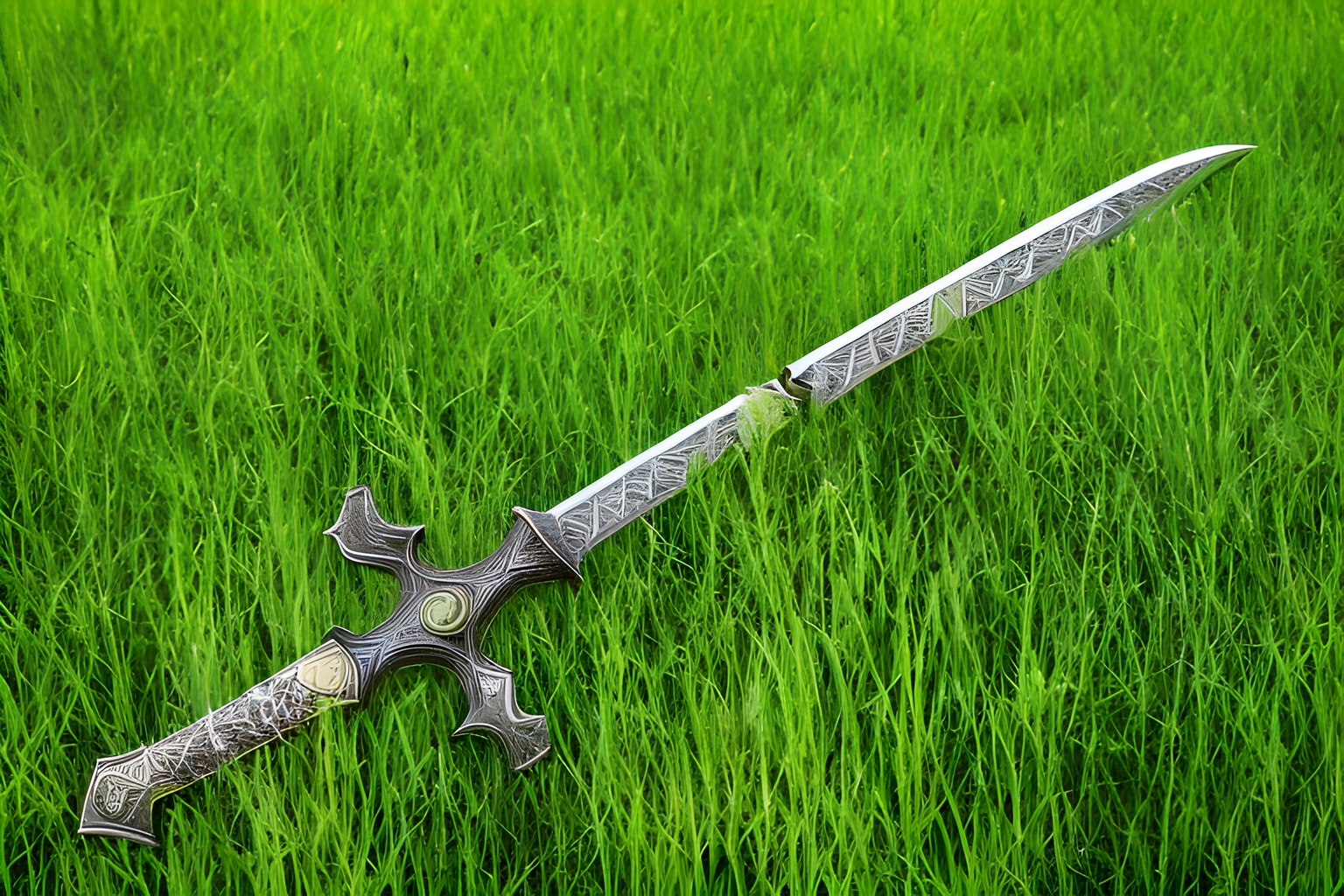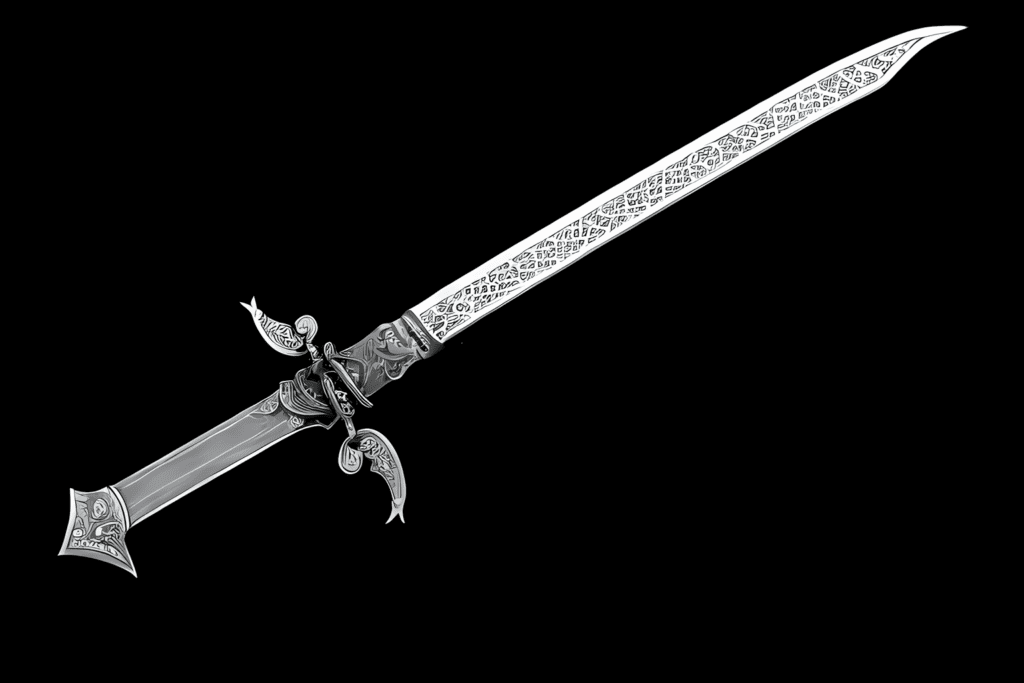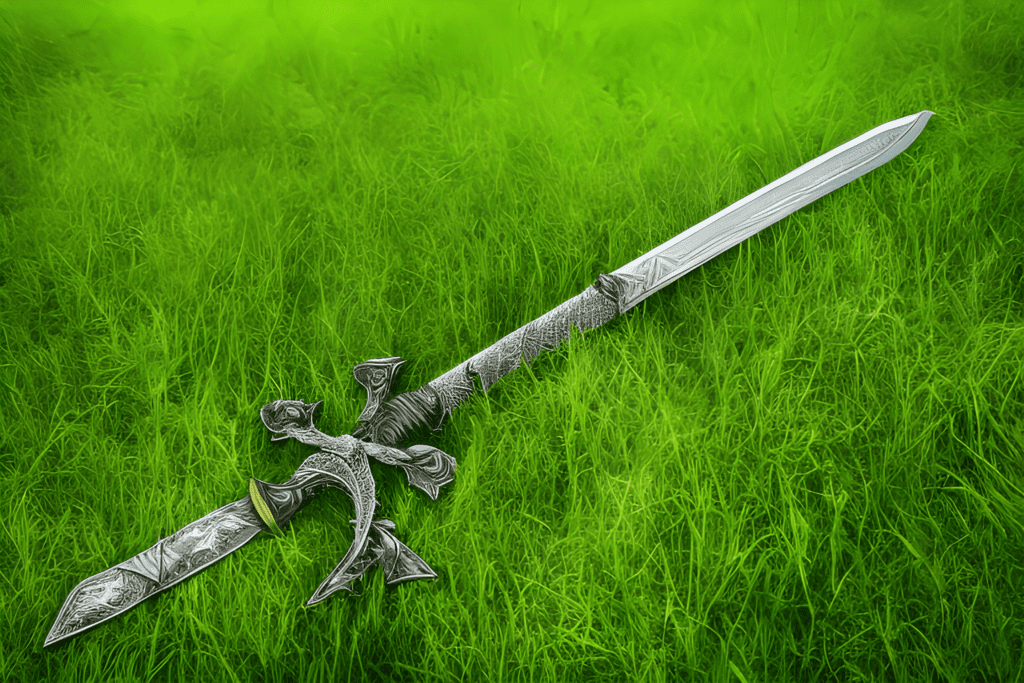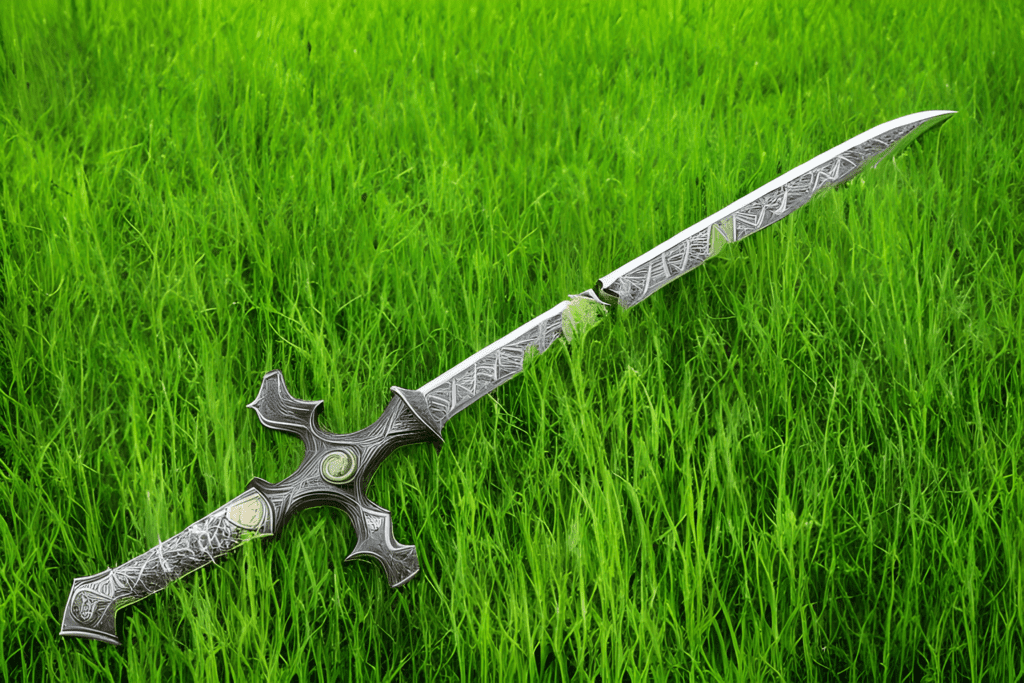These swords were created using image-to-image. It did require more work but you would get images you would never be able to produce using text-to-image alone.
Beauty is power; a smile is its sword.
John Ray
All images are generated with Colab notebook included in the Quick Start Guide.
Prompt for sword:
highly detailed pattern ornated fantasy sword with (sharp: 1.2) blade, metallic titanium blade, cross guard, grip with cross pattern, circular pommel, video game, artstation, black background
Prompt for grass:
close view green grass field texture background
| CFG scale | 7 |
| Sampling steps | 30 |
| Image size | 768×512 |
| Seed | -1 |
| Face restoration | (None) |
| Sampling method | DPM++ 2M Karras |
| Model | Stable Diffusion v1.5 |
| Upscaler | R-ESRGAN Anime6B (for sword) R-ESRGAN (for sword on grass) |
| GUI | AUTOMATIC1111 |
Technical notes
These images were generated with image-image using techniques described in this article. First started with a black background. Drew the shape of a sword. Then many rounds of image-to-image using the prompt above.
A sword in black background is convenient to cast into different settings. You can use photo editing software such as Photoshop or Gimp. To test how well it works, I generate an equal-sized image of a close-up view of a grass field.
Of course, when overlapping the sword on the grass, it looks unnatural: The light and shadow are not consistent, and the sword was like floating on top of the grass. Let’s do some more image-to-image.
Image-to-image alone didn’t do it. Neither did increasing denoising strength. In the end, I needed to sketch a few grass leaves AND THEN do image-to-image. After playing with the denoising strength, I got some decent ones.




